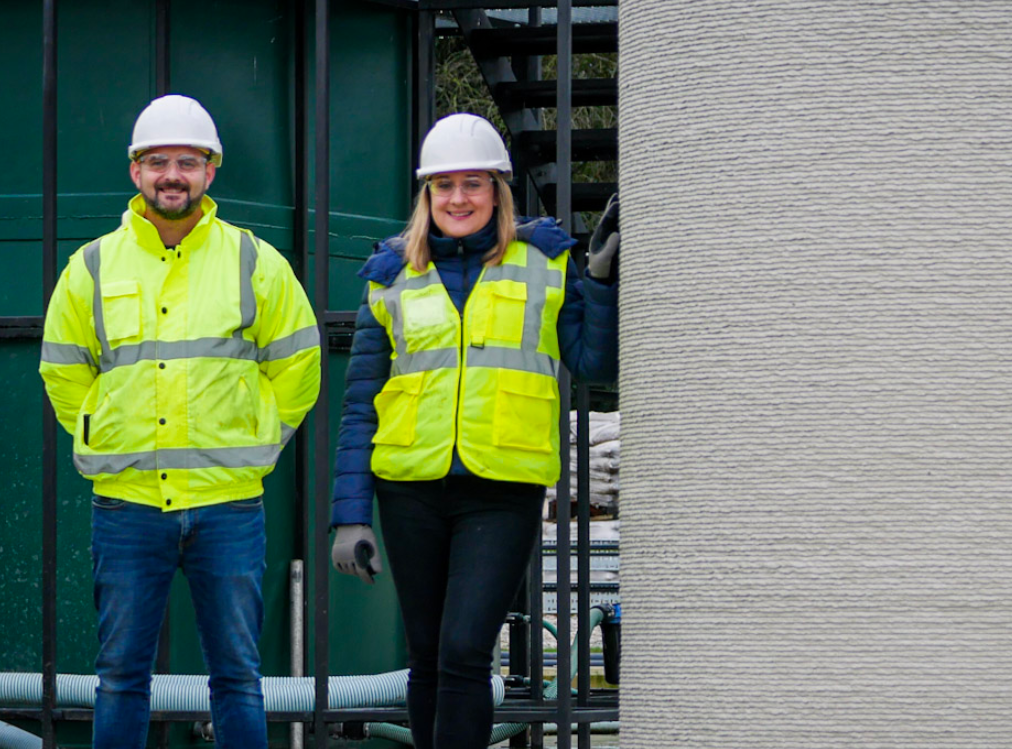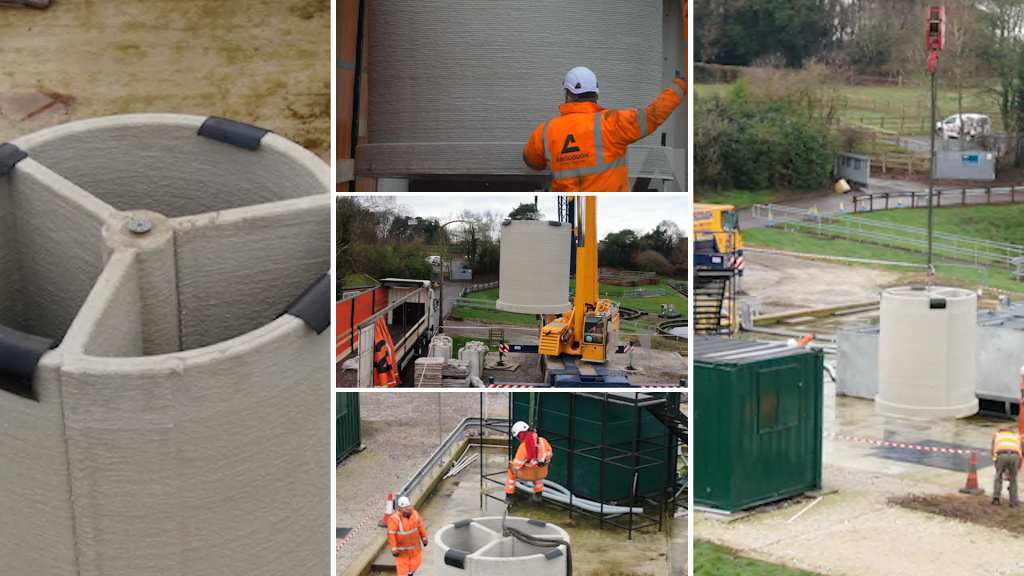Construction start-up ChangeMaker 3D has partnered with water and wastewater service provider United Utilities to 3D print a UK-first piece of sewage infrastructure.
Over the course of 12 months, the firms have developed, installed and evaluated a 1.8-meter wastewater chamber at one of United Utilities’ Cheshire test facilities. By 3D printing the structure via CyBe Construction technology, the pair have managed to make it safer to build, while reducing its lead time to less than four hours.
“This is important for us in realizing our aim to drive efficiency and improvement in everything we do for the benefit of our customers,” said United Utilities’ Chief Engineer (Innovation), Lisa Mansell. “We have a huge capital programme to deliver under tight deadlines. Digital technologies such as 3D construction printing can drive efficient construction and help us meet our Net Zero goals for carbon.”
“The future is exciting for water companies like United Utilities who are trailblazing innovation.”
The technology behind a UK first
Established five years ago by Luke and Natalie Wadley, Changemaker 3D is a firm dedicated to the construction of infrastructure that’s more sustainable, and delivers greater value for users. In order to realize this ambition, the company has struck a deal with CyBe, through which it has adopted its partner’s concrete 3D printers.
According to Changemaker 3D, CyBe’s technology, which is marketed in gantry, robotic crawler and fixed-robot-mounted iterations, yields significant cost, lead time and sustainability benefits. CyBe’s mortar is said to be central to these advantages, in that it’s 60% more eco-friendly than Portland cement, and at least 50% faster setting, effectively becoming load-bearing inside an hour.
Compared to traditional manual bricklaying, Changemaker 3D also says the automation of such advanced robotics systems helps users “save at least 43%” on labor, while having infrastructure such as homes ready to occupy sooner potentially “creates cost savings across the whole construction process.”
Already, the company has deployed the technology alongside a Skanska, Costain and STRABAG joint venture (SCS-JV) to 3D print parts of the UK’s HS2 rail network. At the site, Changemaker 3D is said to have worked with Versarien to develop 3D printed graphene structures with unique internal lattice structures that make them stronger and more material-efficient.

Changemaker 3D’s wastewater initiative
In the case of its latest project, ChangeMaker 3D was selected for involvement as part of United Utilities’ Innovation Lab at the start of 2021. Over this 12-week initiative, designed to incubate new ideas and help bring them to market, the firm identified the usually carbon-heavy wastewater distribution chamber as ideal for redesign and production via 3D printing.
With the backing of United Utilities, Changemaker 3D initially created an accurate digital model of the chamber. Once the firm had modeled this full-scale demonstrator, it was later printed off-site by CyBe, shipped to location and craned into position. Using the chamber, Mansell said her company has been able to carry out stringent testing around areas such as water tightness.
Doing so, the engineer adds, has allowed United Utilities to weigh up the “strength and durability” of 3D printed water utility structures, aspects likely to be key to their future adoption in the field. For her part, Natalie Wadley also describes the chamber as a first of its kind in the UK, while implying that it could lay the groundwork for 3D printing’s future usage in UK rail and highway construction too.
“Our mission is to support industry to leave a lighter footprint, and transforming the UK’s infrastructure is critical if the UK is to reach ‘Net Zero,’” added Natalie Wadley, CEO of ChangeMaker 3D. “We believe 3D printed concrete has the potential to help deliver the green growth our country needs. Our aim now is to continue to work with United Utilities to grow the impact.”
“We want to prove this is a technology that can have widespread uses not just in the water sector.”

3D printing in public infrastructure
In the mainstream media, concrete 3D printing is often covered as a potential means of building homes, but the technology has begun entering trials in a range of other infrastructure projects. BAM and Weber Beamix, for example, recently erected a 3D printed staircase to a motorway footbridge over the M8 in Scotland.
In the latter’s native Netherlands, additive manufacturing has also been used to build a number of structures, with MX3D 3D printing a steel bridge in Amsterdam, which is now reportedly open to the city’s pedestrians and cyclists.
Across the pond, meanwhile, ICON has 3D printed barracks for US troops to train in prior to deployment. Designed alongside the Texas Military Department (TMD), the building installed at the Camp Swift Training Center in Bastrop, Texas, is capable of housing up to 72 US troops while they engage in drills.
To stay up to date with the latest 3D printing news, don’t forget to subscribe to the 3D Printing Industry newsletter or follow us on Twitter or liking our page on Facebook.
While you’re here, why not subscribe to our Youtube channel? featuring discussion, debriefs, video shorts and webinar replays.
Are you looking for a job in the additive manufacturing industry? Visit 3D Printing Jobs for a selection of roles in the industry.
Featured image shows Changemaker 3D Co-founders Natalie and Luke Wadley with the UK’s first 3D printed water chamber at the United Utilities site in Cheshire. Photo via Changemaker 3D.


